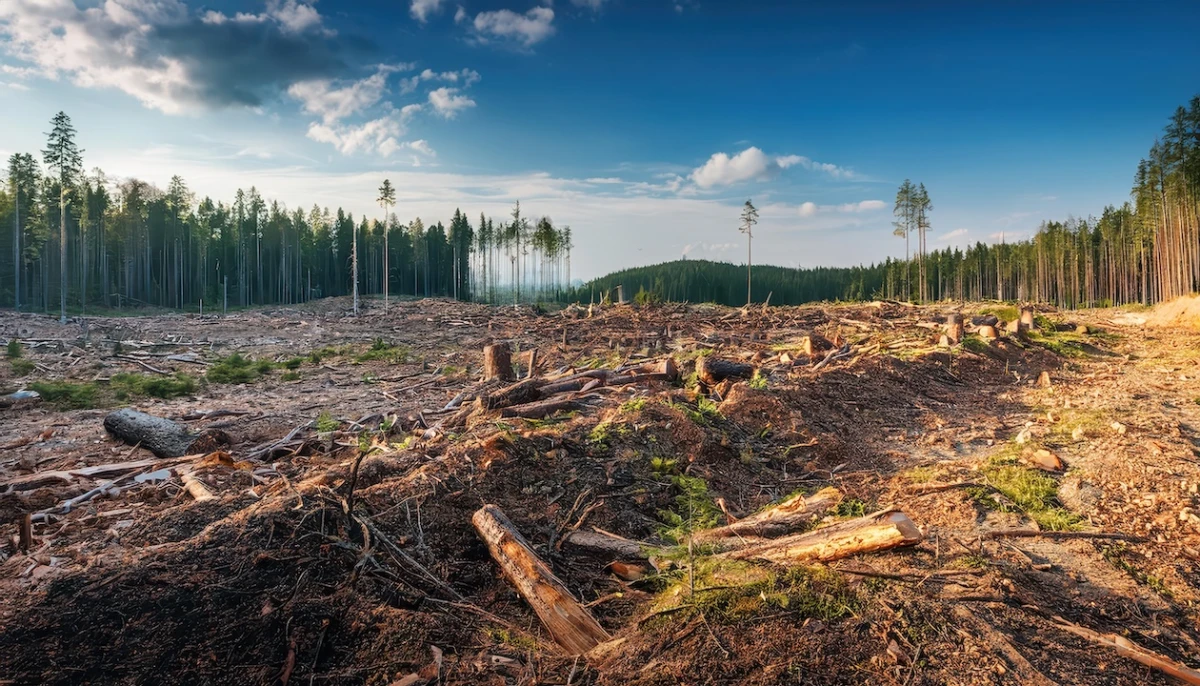#How New EU Rules on Deforestation Are Reshaping ESG Investing
A major regulation from the European Union is pushing companies across food and agriculture to rethink how they source and trace products like coffee, chocolate, soy, and beef. The goal: eliminate links to deforestation. For investors, this regulatory shift presents new areas to monitor, particularly in terms of supply chain resilience, sustainability-linked disclosures, and ESG fund rebalancing.
Companies that cannot trace the origin of their products could face fines of up to 4%1 of global revenue. Others that act quickly on sustainability are becoming magnets for ESG capital and could potentially lead the next bull market for green investing.
The European Union Deforestation Regulation (EUDR)2 is set to transform the global landscape. Although implementation was recently delayed until 20263, this extension is not a reprieve; it's a chance for investors to get ahead. This one-year window could set the stage for major moves in biodiversity protection investment.
Global leaders are already pushing for policies aimed at reducing nature loss and restoring ecosystems, with initiatives like the UN Global Biodiversity Framework4 setting ambitious goals for the restoration of 30% of all degraded ecosystems by 2030.
#Why the EUDR Matters to Investors
The EUDR targets major commodities like palm oil, cocoa, soy, and beef. Companies importing these goods into the EU will be required to prove their products are not linked to deforestation. Those that fail face hefty penalties, lost contracts, and damaged brand value.
But those who succeed? They could see surging demand, premium pricing, and strong ESG fund inflows. Investors focused on supply chain sustainability investing should be watching this space closely.
Leaders like Nestle (OTC: NSRGY) and Unilever plc (LSE:ULVR.LN) are already ahead of the curve. Both have pledged to use 100% sustainably sourced palm oil, cocoa, and soy by 2025. With over 90% compliance5,6 already, they are well-positioned for regulatory shifts and for inclusion in ESG indexes.
#Nature Positive Investing: A New Theme for Growth
While "net zero" has become the standard in climate-focused investing, the next wave is nature positive investing. This goes beyond carbon and focuses on regenerating biodiversity, restoring ecosystems, and protecting wildlife habitats.
Companies that extend their ESG strategies to include soil health, marine ecosystems, and forest regeneration are likely to stand out. Investors looking for growth aligned with sustainability should consider portfolios that target this emerging theme.
#Private Equity Eyes the Lagging Players
Private equity (PE) firms are circling companies that are behind the curve on deforestation compliance7. These lagging players often trade at a discount due to regulatory risk, but that makes them prime targets.
The strategy? Acquire, restructure, bring into compliance, then exit through IPO. Firms with exposure to deforestation-linked commodities like soy and cattle may become tomorrow’s ESG comeback stories.
Retail investors could benefit indirectly through ETFs or mutual funds holding these potential turnaround stories. Or they might find direct opportunities in smaller public companies taking early action to avoid becoming PE targets.
#North America: Following the EU's Lead?
While the U.S. and Canada have not implemented laws as strict as the EUDR, pressure is building. The FOREST Act in the U.S. and evolving provincial standards in Canada suggest that deforestation-linked imports will soon face higher scrutiny.
That makes early movers even more valuable. Companies that act now to enhance transparency, traceability, and certification are likely to win long-term.
For those interested in supply chain sustainability investing, now is the time to monitor North American firms exposed to cocoa, soy, and palm oil. Some of them may already be aligning operations with EU standards to stay competitive in global markets.
#What Retail Investors Should Do Now
The EUDR delay until 2026 is a chance to position early. Investors can:
Identify public companies already taking action on biodiversity and deforestation
Look for ETFs focused on ESG, natural capital, or sustainable agriculture
Monitor PE activity in food and agri-business for potential IPO candidates
Explore nature positive investing strategies through green bonds and thematic funds
As the regulatory tide rises, companies with strong ESG credentials, verified supply chains, and a commitment to biodiversity will likely gain market share, pricing power, and investor attention.
The transition to a biodiversity-aligned economy is not just an environmental imperative; it is a financial one. And it is creating real, investable opportunities for those ready to act.
